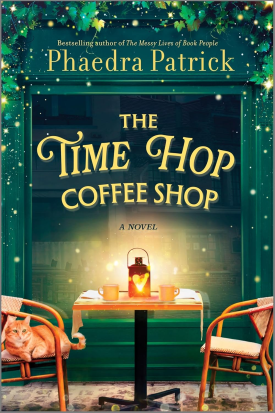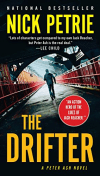Carl Sandburg Books In Order
Book links take you to Amazon. As an Amazon Associate I earn money from qualifying purchases.Publication Order of Standalone Novels
| Remembrance Rock | (1948) | Description / Buy at Amazon |
Publication Order of Children's Books
| Rootabaga Stories | (1922) | Description / Buy at Amazon |
| Rootabaga Pigeons | (1923) | Description / Buy at Amazon |
| Abe Lincoln Grows Up | (1928) | Description / Buy at Amazon |
| Early Moon | (1930) | Description / Buy at Amazon |
| Prairie-Town Boy | (1955) | Description / Buy at Amazon |
| Wind Song | (1960) | Description / Buy at Amazon |
| The Wedding Procession of the Rag Doll & The Broom Handle and Who Was in It | (1967) | Description / Buy at Amazon |
| The Sandburg Treasury | (1970) | Description / Buy at Amazon |
| Rainbows Are Made | (1982) | Description / Buy at Amazon |
| More Rootabaga Stories | (1993) | Description / Buy at Amazon |
Publication Order of Collections
| Incidentals | (1904) | Description / Buy at Amazon |
| In Reckless Ecstasy | (1904) | Description / Buy at Amazon |
| Chicago Poems | (1916) | Description / Buy at Amazon |
| Cornhuskers | (1918) | Description / Buy at Amazon |
| Smoke and Steel | (1920) | Description / Buy at Amazon |
| Slabs of the Sunburnt | (1922) | Description / Buy at Amazon |
| Poems of the Midwest | (1946) | Description / Buy at Amazon |
| The Complete Poems | (1950) | Description / Buy at Amazon |
| Harvest Poems | (1960) | Description / Buy at Amazon |
| Honey and Salt | (1963) | Description / Buy at Amazon |
| Breathing Tokens | (1978) | Description / Buy at Amazon |
| Ever the Winds of Chance | (1983) | Description / Buy at Amazon |
| Fables, Foibles, and Foobles | (1988) | Description / Buy at Amazon |
| Arithmetic | (1993) | Description / Buy at Amazon |
| Billy Sunday And Other Poems | (1993) | Description / Buy at Amazon |
| Carl Sandburg: Selected Poems | (1996) | Description / Buy at Amazon |
| Poems for Children Nowhere Near Old Enough to Vote | (1999) | Description / Buy at Amazon |
| Poetry for Kids | (2017) | Description / Buy at Amazon |
Publication Order of Non-Fiction Books
| You and Your Job | (1908) | Description / Buy at Amazon |
| Abraham Lincoln: The Prairie Years | (1926) | Description / Buy at Amazon |
| The American Songbag | (1927) | Description / Buy at Amazon |
| Mary Lincoln: Wife and Widow | (1932) | Description / Buy at Amazon |
| Abraham Lincoln: The War Years | (1939) | Description / Buy at Amazon |
| Storm Over The Land | (1942) | Description / Buy at Amazon |
| Home Front Memo | (1943) | Description / Buy at Amazon |
| New American Songbag | (1950) | Description / Buy at Amazon |
| Always the Young Strangers | (1953) | Description / Buy at Amazon |
| A Lincoln Preface | (1953) | Description / Buy at Amazon |
| The Letters of Carl Sandburg | (1968) | Description / Buy at Amazon |
| The Chicago Race Riots of 1919 | (1969) | Description / Buy at Amazon |
| Ever the Winds of Chance | (1983) | Description / Buy at Amazon |
| Carl Sandburg at the Movies | (1985) | Description / Buy at Amazon |
| The Poet and the Dream Girl | (1987) | Description / Buy at Amazon |
| The Movies Are | (2000) | Description / Buy at Amazon |
| The Sandburg Range | (2001) | Description / Buy at Amazon |
| Lincoln Collector | (2012) | Description / Buy at Amazon |
Publication Order of Poetry Books
| The People, Yes | (2009) | Description / Buy at Amazon |
Publication Order of American Poets Project Books
Publication Order of Poetry for Young People Books
Publication Order of Anthologies
Carl Sandburg was an American folklorist, historian, poet, and novelist.
The author was born in Galesburg in 1878 to Clara and August Sandburg who had both moved to the United States from Sweden before getting married. When he was thirteen years old, he left school so that he could support his family.
During the Spanish-American War and the years afterward, he kept his dream of going back to school alive. Somehow he managed to qualify for college admission even though he never graduated from high school.
It was while he was studying at the Galesburg-based Lombard College that he began to write prose and poetry. His very first booklets were published by Philip Green Wright his favorite professor in college.
Ultimately, Carl Sandburg never graduated from college as he became a traveling salesman and then an orator and organizer for the Wisconsin branch of the Social Democratic Party.
While working at the headquarters of the party, he met the younger sister of photographer and painter Edward Steichen, Lilian Stechen. By this time Edward was already developing quite a reputation in Paris and New York.
Lilian and Sandburg got married in 1908 and by 1912 they had moved to Chicago where the latter got a job working as a journalist.
During this time, he for the most part worked writing socialist and business journals and for newspapers under a pseudonym and sometimes using his own name.
In the more than 50 years he spent working for several publications, he worked as a nationally syndicated columnist, local news reporter, movie critic, investigative reporter, and war correspondent.
His wife encouraged him to keep writing free verse and in 1914 he got several of his poems published by Harriet Monroe in “Poetry: A Magazine of Verse.” “Chicago Poems,” his first book came out in 1916.
“Honey and Salt” his last collection of poems came out in 1963 when he was 85. He is now one of the most celebrated poets in the United States lovingly referred to as the “Poet of the People.”
Carl Sandburg was a popular performer who played the guitar and sang American folk music while reading his prose and poetry. In 1926, he published “Abraham Lincoln: The Prairie Years” which was a two-volume work that would become very popular.
Further research gave birth to “Abraham Lincoln: The War Years,” which would win the Pulitzer Prize when it was published in 1939. He also won the Pulitzer for the 1950 published “Complete Poems,” which had most of his best poems.
Sandburg also published poems and stories for children and worked with his brother-in-law Edward Steichen on the 1955 published “The Family of Man.”
He lived the last two decades of his life in Flat Rock, North Carolina on a 245-acre farm he named Connemara, which has now been turned into a National Historic Site.
He died on the farm aged eighty-nine in 1967. His ashes were buried in the place where he was born in Galesburg, Illinois, which has also been turned into a state historic site.
“Abraham Lincoln” by Carl Sandburg is one of the best biographies of Abraham Lincoln as penned by Carl Sandburg. As a poet, he writes a more mythical and epic version of the great man’s history, which tends to be less critical in its examination.
“The Prairie Years” which is the first part explores the early years and career of Lincoln before he became president.
It all begins with his family making their home in Kentucky where the future president was born in 1809. The family would then move to Illinois then Slem before ending up in Springfield.
Sandburg then chronicles Lincoln’s development to become an attorney, his political ambitions, and his dalliance with the militia, as he lays out the standard history of Abraham Lincoln peppered with anecdotes.
We get to see his rocky courtship of Mary Todd and his shaky relationship with Ann Rutledge. Sandburg then discusses his run for Senate where he debated Stephen Douglas, which brought him into the national limelight.
The work then explores his contribution to the Civil War, which to a great extent shaped his thinking.
The volume describes the many challenges Lincoln faced coordinating the war effort from the Union side, the strained relationship with his wife, and the death of his child, which was a significant family tragedy.
Overall, it is a romanticized, lyric, and poetic view of Lincoln.
Carl Sandburg’s “Chicago Poems” is the work that put the author on the literary map.
The work opens with Chicago which is Sandburg’s most famous poem that is all about the windy city much like the rest of the collection.
The author takes on the glorious and gritty of the city in about 140 poems of varying styles and lengths. The first part of the collection is the largest with about fifty prose and free verse poems written in intermediate and short length format.
Several lesser-known works in the collection such as Mamie, Fish Crier, Mag, and Happiness are also very good too.
The second part of the collection which is titled “Handfuls” is all about several short poems beginning with “Fog,” one of the author’s most famous poems. “War Poems,” the third section is a collection of several poems he penned during World War I.
Other sections of the collection include “Other Poems,” “The Road and the End,” “Shadows and Fogs” and Fires.
There are frequent references to neighborhoods and streets in Chicago, even though even someone from Chicago will love the collection.
While he sometimes rails against the opulence of the city where many hardly earn a living, he also dotes on the city’s magnificence at times.
It would be an understatement to call Carl Sandburg’s novel “The Family of Man” a book about photographs.
It all began as an art exhibit in 1955 that would turn into one of the most popular photo shows ever. It would then be moved to New York City and then make an appearance all across the globe.
Second, it is an essay that is often uplifting, always engaging, and sometimes didactic on the human condition.
It comes with themes of slavery and freedom, sorrow and joy, death and birth. The pages invite introspection, amusement, and delight.
On the right, you get an African storyteller standing inside a native house juxtaposed with a professor in a Princeton University lecture hall where a professor speaks to well-dressed students on the left.
The exhibit was criticized for being too sunny and not living up to the ethnic and cultural sensitivities of the modern world but it has also been praised for recognizing our shared values.
If there is one photography book you need to own this is one that you should get.



 Any issues with the book list you are seeing? Or is there an author or series we don’t have? Let me know!
Any issues with the book list you are seeing? Or is there an author or series we don’t have? Let me know!